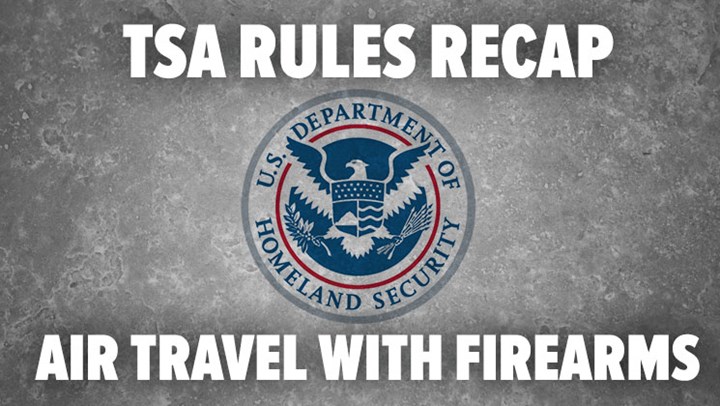
by Kat Ainsworth - Saturday, May 20, 2017

On Jan. 6, 2017, a man who would later claim to be hearing voices and under the influence of mind-control carried out a mass shooting at Fort Lauderdale-Hollywood International Airport in Broward Country, Fla. Five people were killed and six were injured as a direct result of shots fired, but a total of 36 people sustained injuries during the ensuing panic. The shooter used a Walther PPS 9mm, a gun he’d declared in his checked baggage for travel on Delta Airlines from Ted Stevens Anchorage International Airport in Alaska to his Florida destination.
In what appears to be related social media news, numerous gun owners are now reporting issues with the Transportation Security Administration (TSA) while attempting to check firearms for air travel. Do your part to streamline the check-in process by checking the rules—and those of your respective airline—in advance.
Know the Rules
Some regulations vary by airline and state but all start with the following basic TSA rules for transporting firearms and ammunition.
Note that recent complaints regarding the TSA are over the fact it requires that gun cases be locked all the way around rather than only on one side, or that they have a lock in every padlock hole rather than in only a few. Though these particular requirements are not listed on the TSA site, individual airlines may—and do—have their own sets of rules. Those rules vary by airline but do indeed include:
Regarding locks, use solid key locks with a shackle clearance wide enough to fit the gun case without allowing extra movement once locked. If an agent demands the keys, refer him or her to the Code of Federal Regulations regarding traveling with firearms:
It’s advisable to not only know the rules of the TSA, the specific airline, and the state(s) you will be in but also to have a printed copy of those rules with you. It is wise to have the rules in your carry-on in case you encounter a counter agent or TSA representative who is unfamiliar with regulations surrounding firearms and/or ammo.
Know the Process
Firearms must be checked in at the airline counter rather than via a curb-side sky cap. At the counter, declare your firearms as a matter-of-fact. Be confident as your confidence helps reassure the counter agent. Some agents will ask for visual proof the guns are unloaded in which case you will open the case and show them. Chamber flags or gun locks running through the chamber of your firearm are good visual indicators and can speed up the process.
You will be asked to sign a card confirming the firearms are unloaded that by law you must place inside your and then place it in your hard-sided case. If an agent attempts to label the outside of the case as containing a firearm, inform them Federal law prohibits this: 18 USC Sec. 922(e), “No common or contract carrier shall require or cause any label, tag, or other written notice to be placed on the outside of any package, luggage, or other container that such package, luggage, or other container contains a firearm.”
Lock your gun case before you and the counter agent take it to be checked by TSA. Stay in the immediate area. If TSA needs the case opened for some reason or has questions, you must be present. At most airports you can stand in an area that provides you with a visual of the space where TSA checks special baggage. When the TSA agent is finished checking the locks and scanning the case, he or she will signal that you are good to go. As you leave to go through Security, pay attention to announcements and pages in case for some reason you are required to go back to the TSA luggage check point.
At your destination your gun case either will be set aside in an area designated for special baggage or put on the belt with other checked baggage, depending on the airline and the baggage handler. Check your case before leaving the airport to ensure it is still secure and nothing is missing.
At the time of this writing, neither TSA nor any of the airlines have changed their rules regarding traveling with firearms, but note that rules are subject to change. It is a good idea to double check rules prior to your departure so you, the gun owner, are prepared.
E-mail your comments/questions about this site to:
[email protected]
